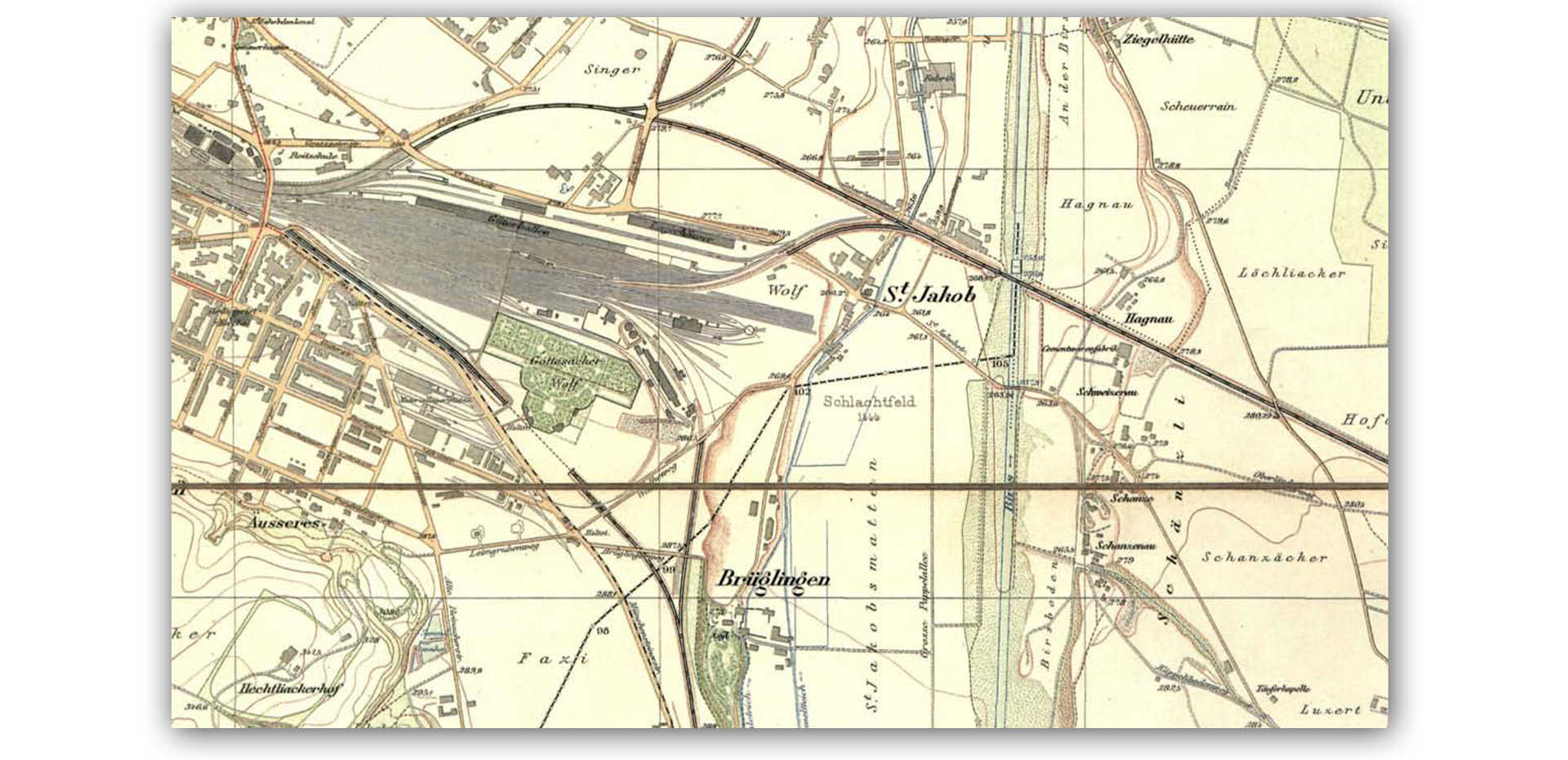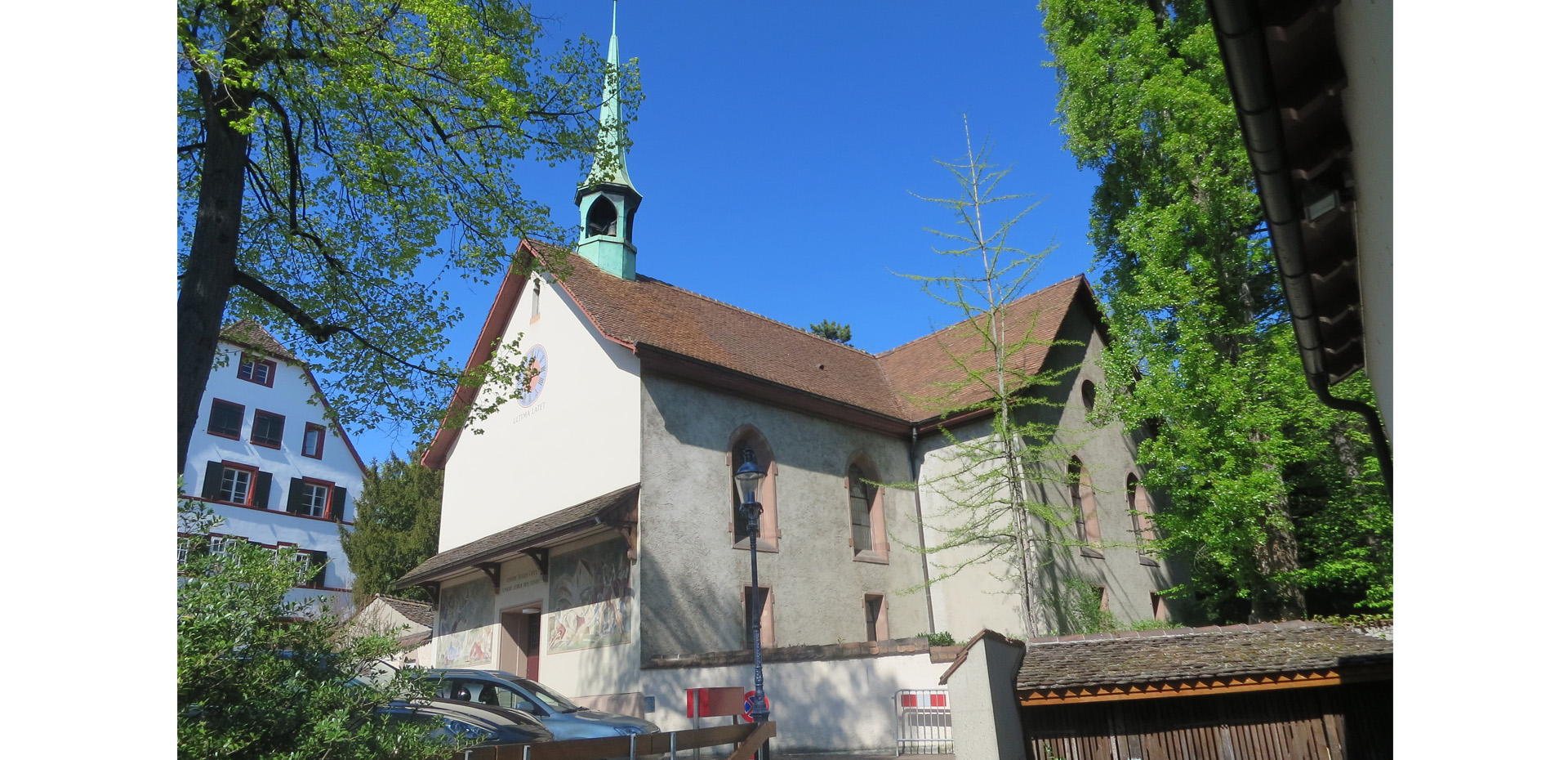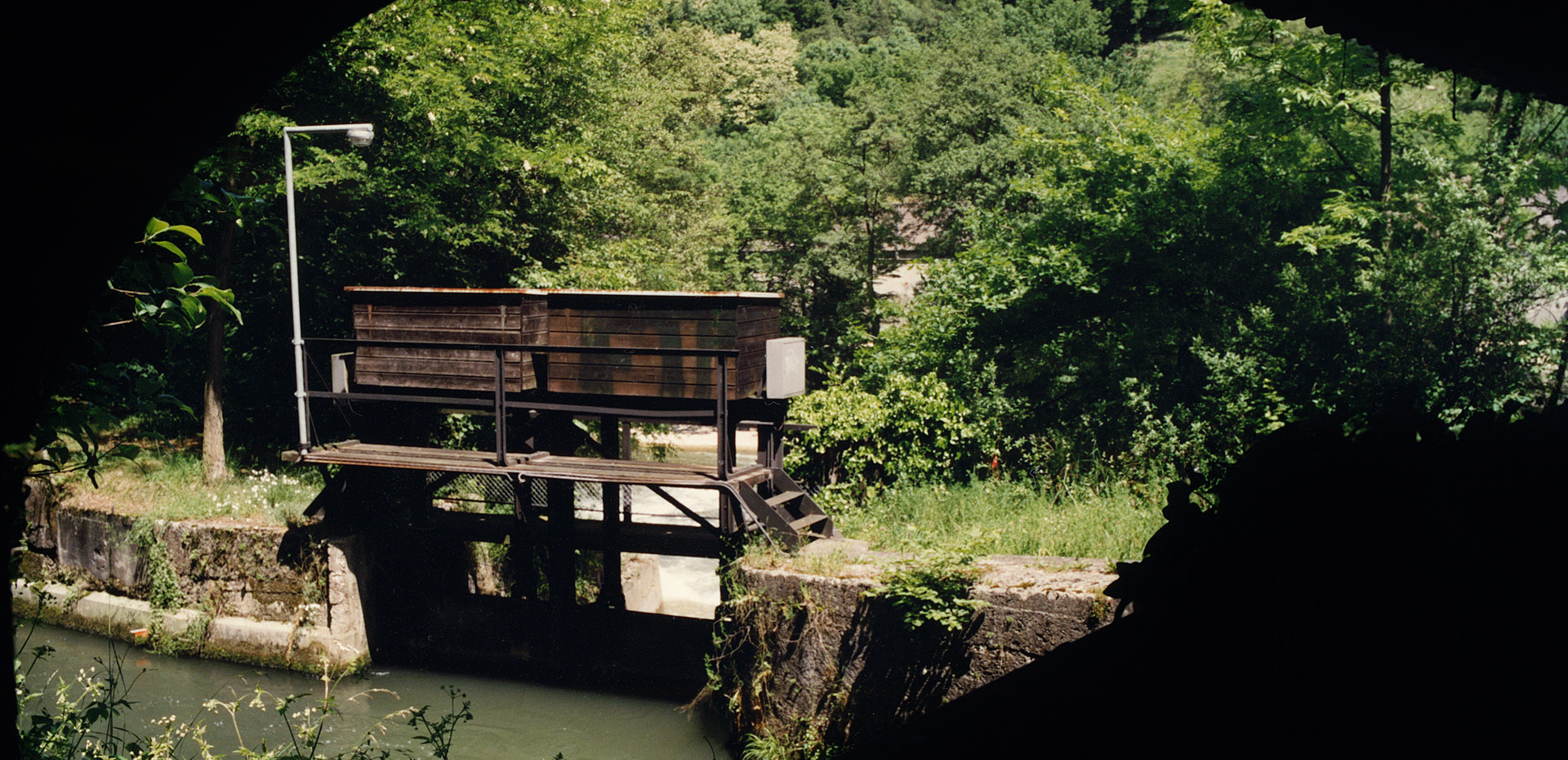St. Jakob (Km 2.0)
This is where the story of the Teich begins. At the southernmost corner of the area that the St. Alban monastery had received from the bishop, the monks channelled water from a tributary of the Birs to their mills in the St. Alban Valley.
There was a small chapel here at that time already, not incidentally dedicated to St. James, the patron saint of travelers. This is where an old country road crossed the branching river by means of footbridges and through fords. It was the Hauenstein route, an important supra-regional transport route that connected Basel with the Swiss midlands. After the Council of Basel had taken over the ford rights in 1295, it had a customs house built next to the bridge over the St. Albanteich. Though it has been rebuilt several times, it still exists today: the Wirtshaus St. Jakob [St. Jakob tavern].
Shortly before, in the middle of the 13th century, the quarantine settlement for leprosy patients had been built near St. Jakob. The so-called Siechen [infirm] were cared for by the monks of the St. Alban monastery. After the decline of leprosy in the 16th century, the quarantine settlement was closed. The infirmaries, however, still exist today.
St. Jakob became sadly famous as a result of the battle of 1444. It is difficult to imagine a more senseless mas-sacre than the bloody battle that a horde of young Swiss fought against the army of the Armagnacs. Ignoring explicit orders, they had thrown themselves upon a superior force. The myth that their heroic sacrifice saved Basel and the Confederation persisted well into the 20th century and was celebrated in regularly occurring St. Jakob Festivities.
Battles still take place at St. Jakob, but they are more of a sporting nature. When sport came to be increasingly considered an important element of socialization in the 1930s, the government invested heavily in the con-struction of public sports facilities. The construction of a football stadium on the Brüglingen Plain began in 1937. However, construction had to be suspended at the beginning of the Second World War because concrete was rationed. The stadium was only ceremoniously opened in 1954, shortly before the start of the Football World Cup, with an international match between Switzerland and Germany.
Image no. 1 State Archive of the City of Basel, image identification: BILD Falk. A 254 St. Jacob. St. Margarethen. Gundeldingen. Brüglingen. St. Albanteich. Birs. Schänzlein Galgen. Bruderholz


















